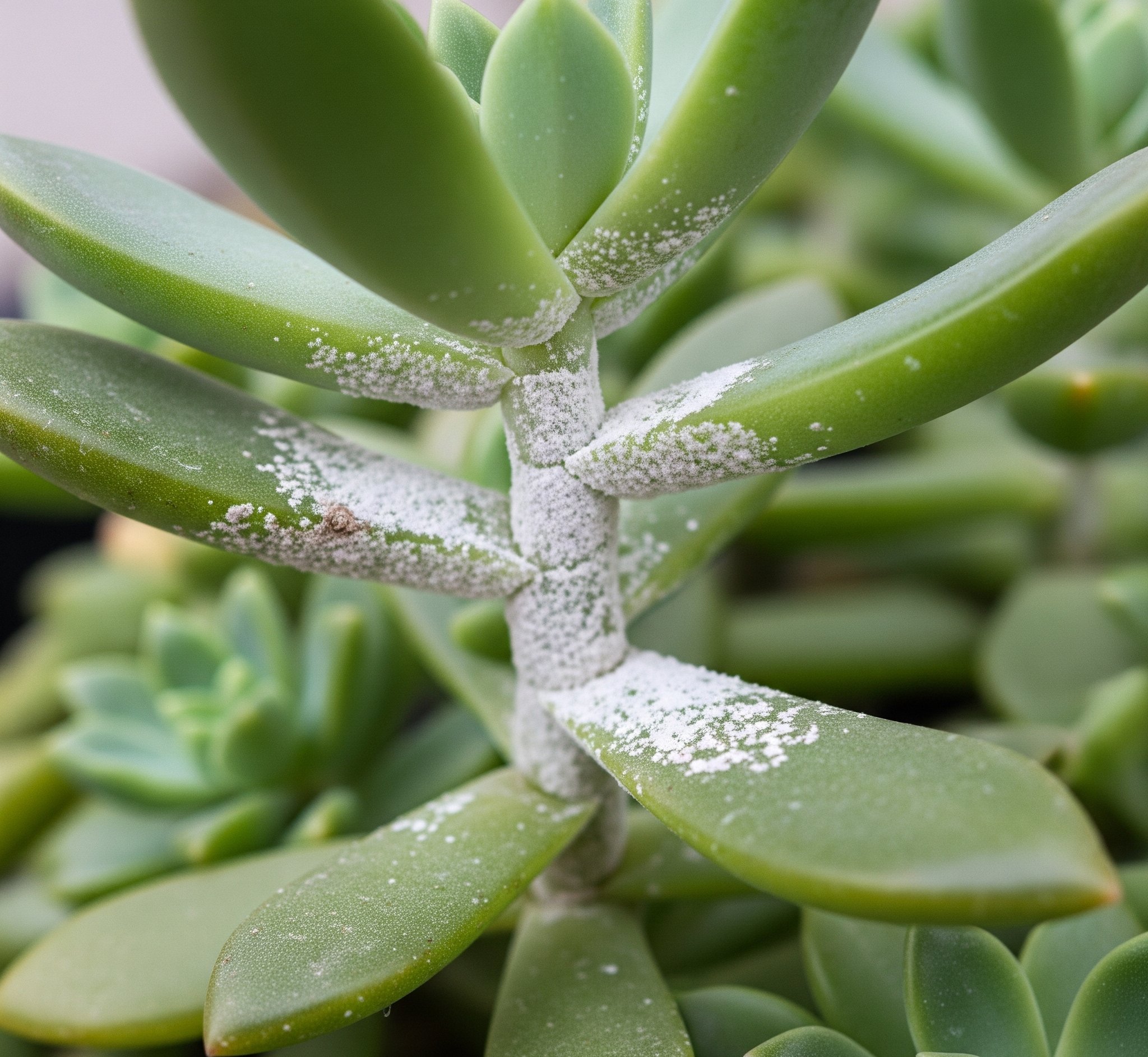Powdery Mildew on Succulents
Powdery mildew is a common problem that affects many types of succulents, leaving a white, powdery coating on leaves and stems. You might notice your plants looking like they have been dusted with flour, or see patches of gray or white on the surface. If untreated, powdery mildew can weaken your succulents and make them look unhealthy.
Powdery mildew is caused by a fungus that spreads quickly in warm, humid conditions, often showing up when the air is still and there is moisture around your plants. It is important to spot this issue early so you can stop it from spreading to other plants. Taking care of it as soon as possible will help your succulents recover and stay strong.
Key Takeaways
- Powdery mildew shows up as a white powder on succulent leaves.
- It spreads in warm and humid conditions.
- Treating infected plants quickly protects your whole collection.
Recognizing Powdery Mildew on Succulents
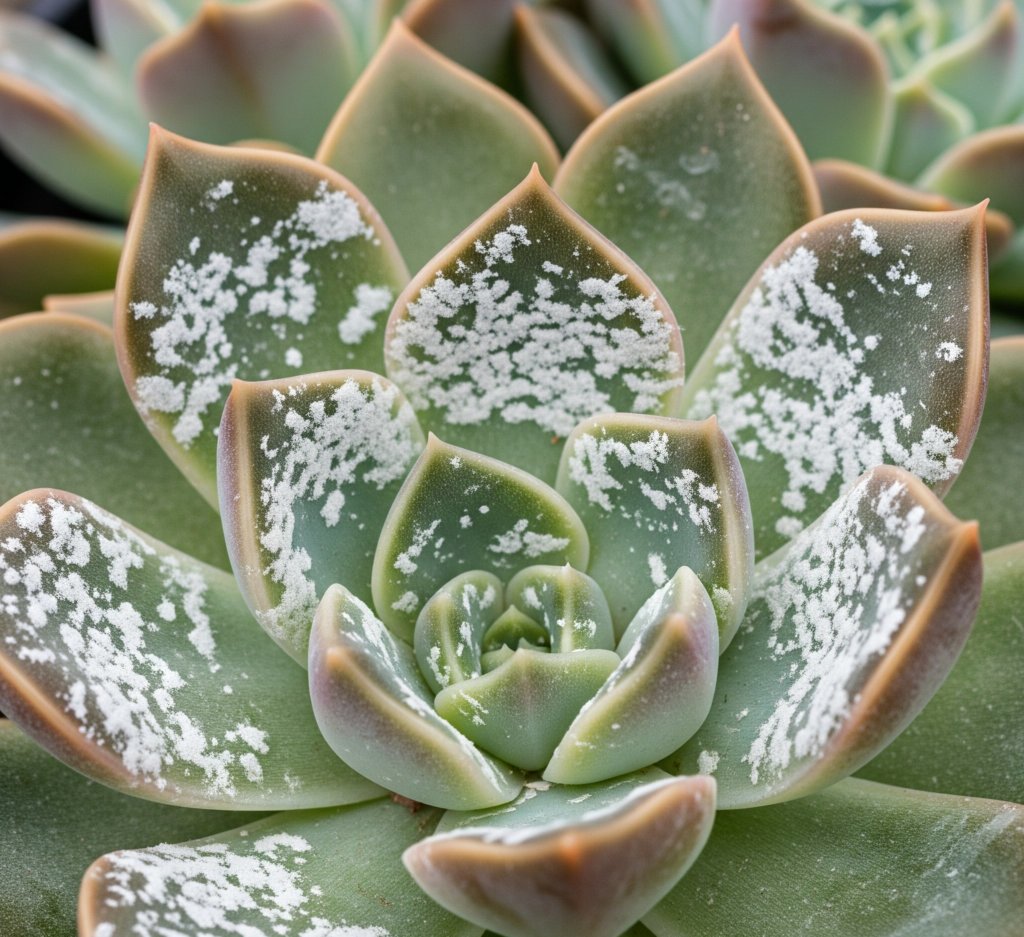
Powdery mildew is a fungal problem that can damage your succulents if not noticed early. Knowing how to spot this disease and tell it apart from harmless features is important for healthy plants.
Visual Symptoms and Early Detection
Powdery mildew looks like a white or gray powder on your succulent’s leaves, stems, and sometimes flowers. It often starts as small, dust-like patches that can grow and spread fast. The powder is made up of fungal spores, which may look similar to baby powder or a thin film.
Early detection means checking your plants for any change in color or texture on the leaves, especially the top side. Leaves might look dull, lose color, or feel dry and stiff. Stunted growth and leaf drop can happen if the infection gets worse.
To catch the disease early, inspect your succulents each week. Look for any new spots, especially after watering or during warm, humid weather. Prompt action stops fungal spores from spreading to other plants.
Commonly Affected Succulent Varieties
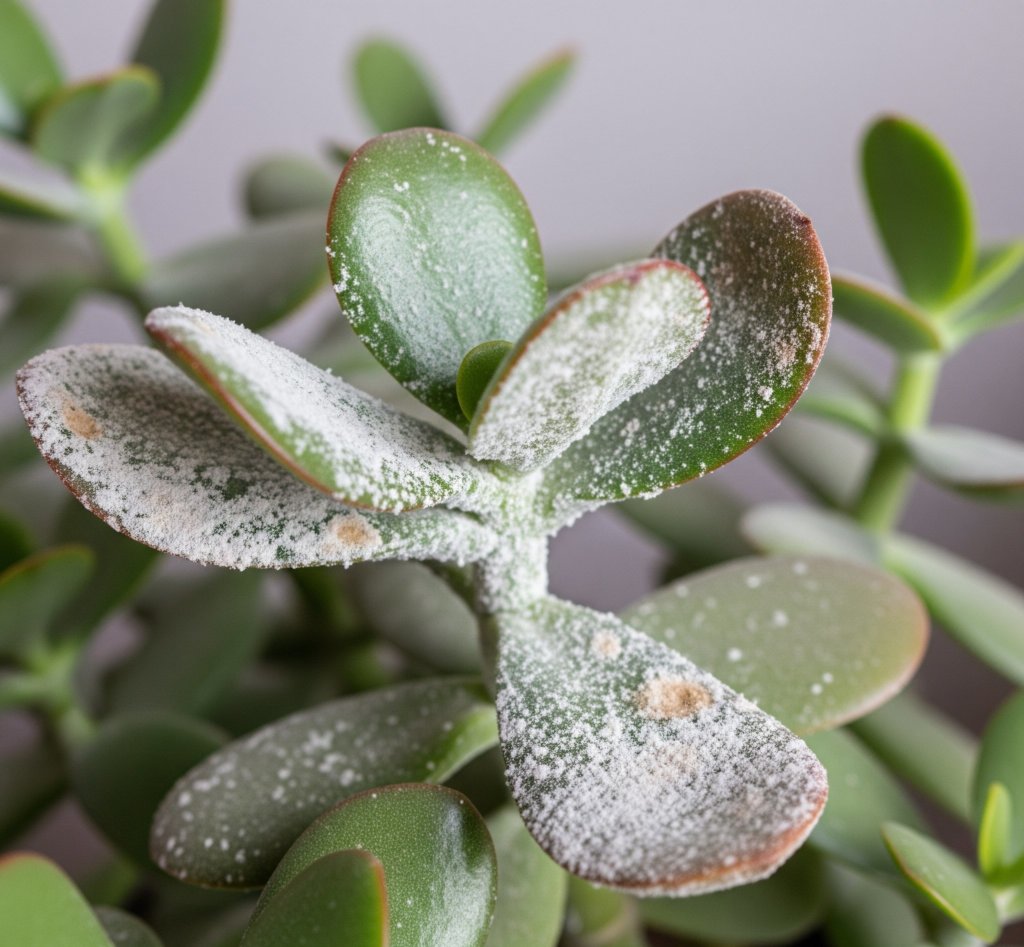
Some succulents get powdery mildew more often than others. Echeveria is a popular type that is especially at risk. Their large, open leaves can trap moisture and give the fungus an easy spot to grow. Jade plants (Crassula ovata) are also prone to this disease, especially in humid rooms.
Other common varieties that may be affected include Kalanchoe, Sedum, and Aloe. These succulents sometimes show more visible symptoms and can pass the fungus to neighboring plants. Enclosed spaces or poor air flow makes it easier for fungal spores to take hold, so certain group plantings are more at risk.
Monitoring these susceptible types and giving them good air circulation helps lower the chance of infection. If you spot powdery mildew on one plant, separate it quickly to stop the spread.
Differentiating Powdery Mildew from Farina
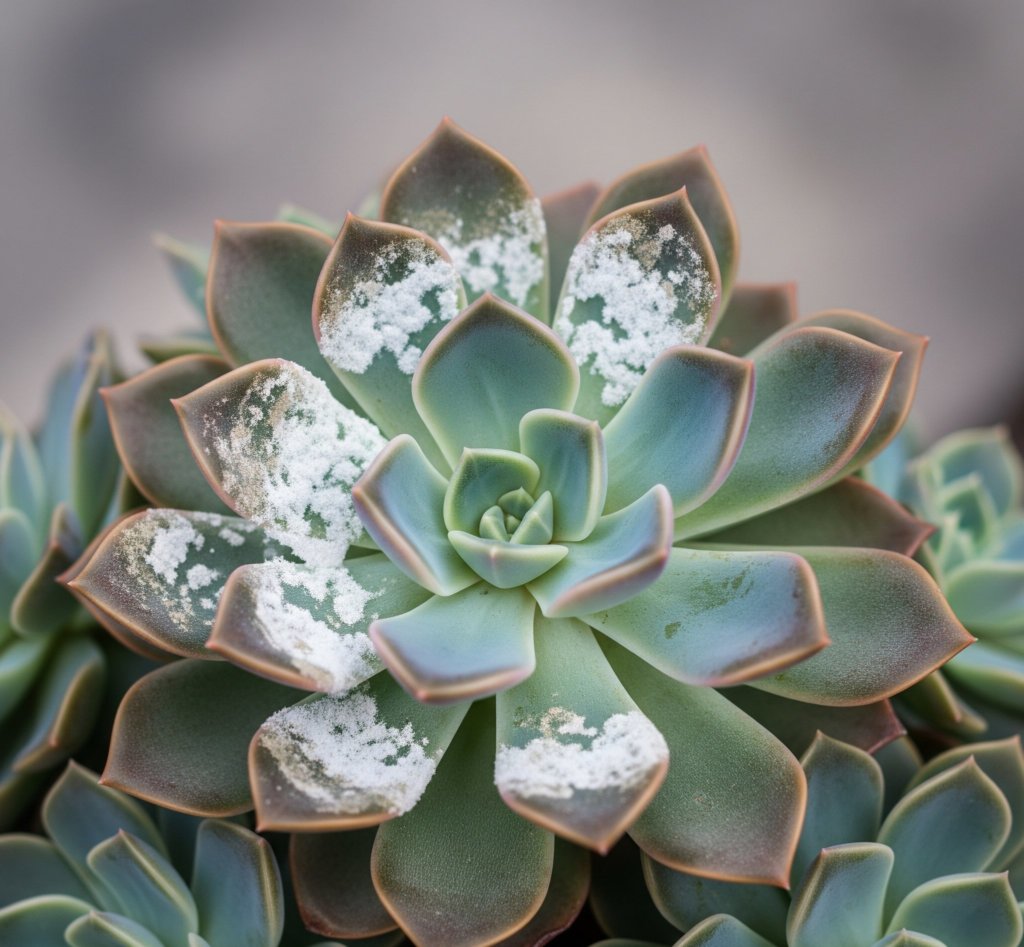
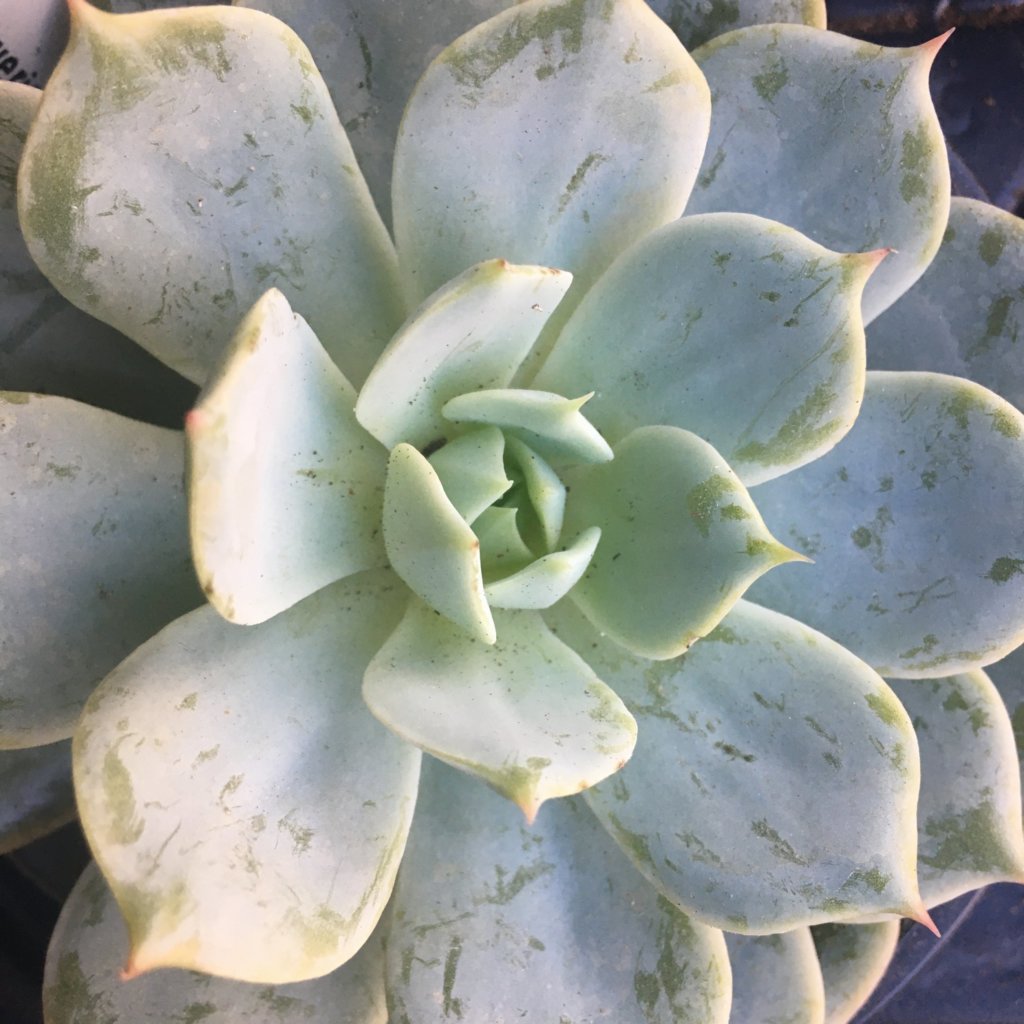
It’s easy to confuse powdery mildew with farina, a natural, protective waxy coating some succulents have. Farina appears as a soft, even, whitish layer on the leaves, especially in varieties like Echeveria. It does not rub off as easily in patches and helps protect the plant from sunlight and pests.
Powdery mildew, on the other hand, forms patchy, powder-like spots that can be wiped off with a finger. If you rub a leaf and see the white layer come off in small chunks or leave green skin underneath, it may be mildew. Farina rarely affects the plant’s health, while mildew will make the plant look weaker over time.
To check, use a damp cotton swab to gently wipe the leaf. If the white wipes away cleanly and exposes healthy green tissue, it is likely mildew and not just farina. This quick test can help you decide if your plant needs treatment.
Causes and Conditions for Powdery Mildew
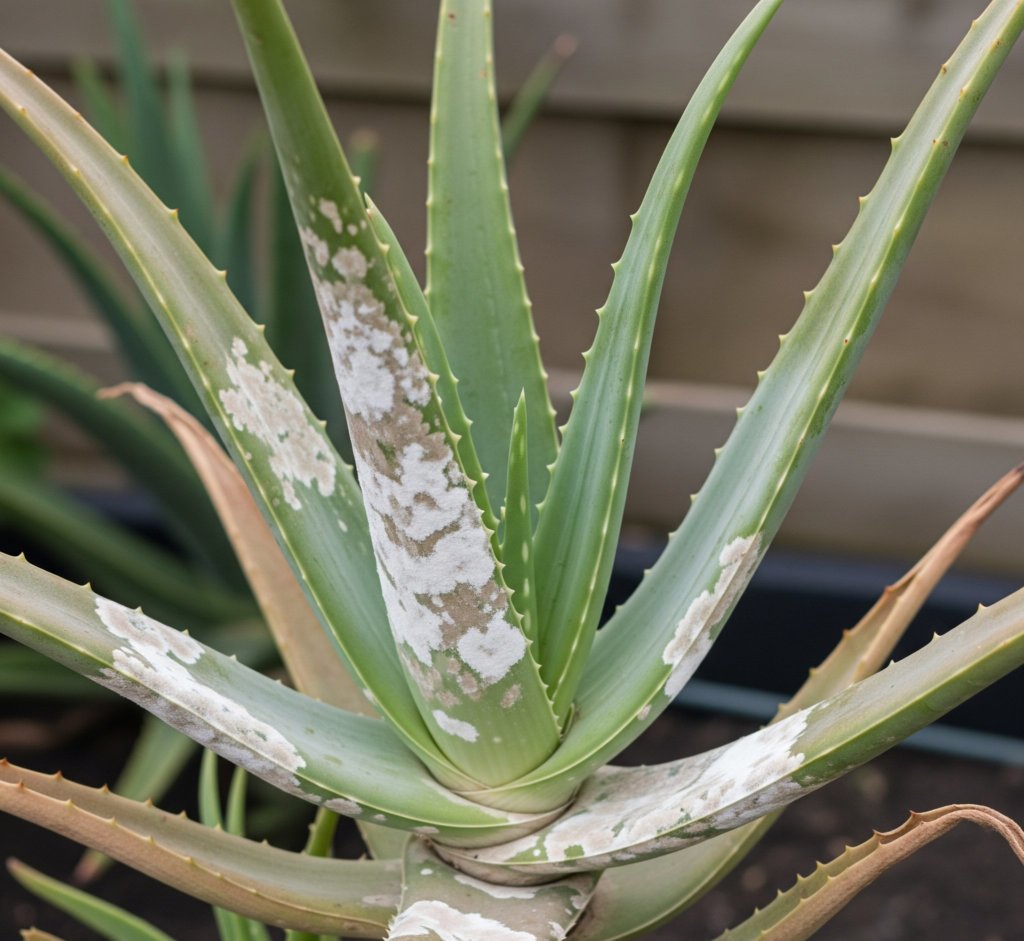
Powdery mildew starts with a fungal infection that thrives in certain conditions. The way you water your succulents, the humidity around them, and the amount of airflow all have a big effect on whether this disease takes hold.
Fungal Disease and Infection Cycle
Powdery mildew is caused by fungi, most often from species like Erysiphe cichoracearum or Podosphaera xanthii. These fungi live on the surface of your plant’s leaves and stems, forming a white powdery coating.
The spores spread through the air and land on plants. Once conditions are right, the spores germinate and begin the infection. This fungus can spread quickly if not treated, weakening succulents by blocking sunlight and slowing photosynthesis.
The infection cycle is especially fast in mild temperatures and when spores have easy access to foliage. If your plant has already had this disease, spores can survive nearby and infect healthy plants again.
Environmental Factors: Humidity and Air Circulation
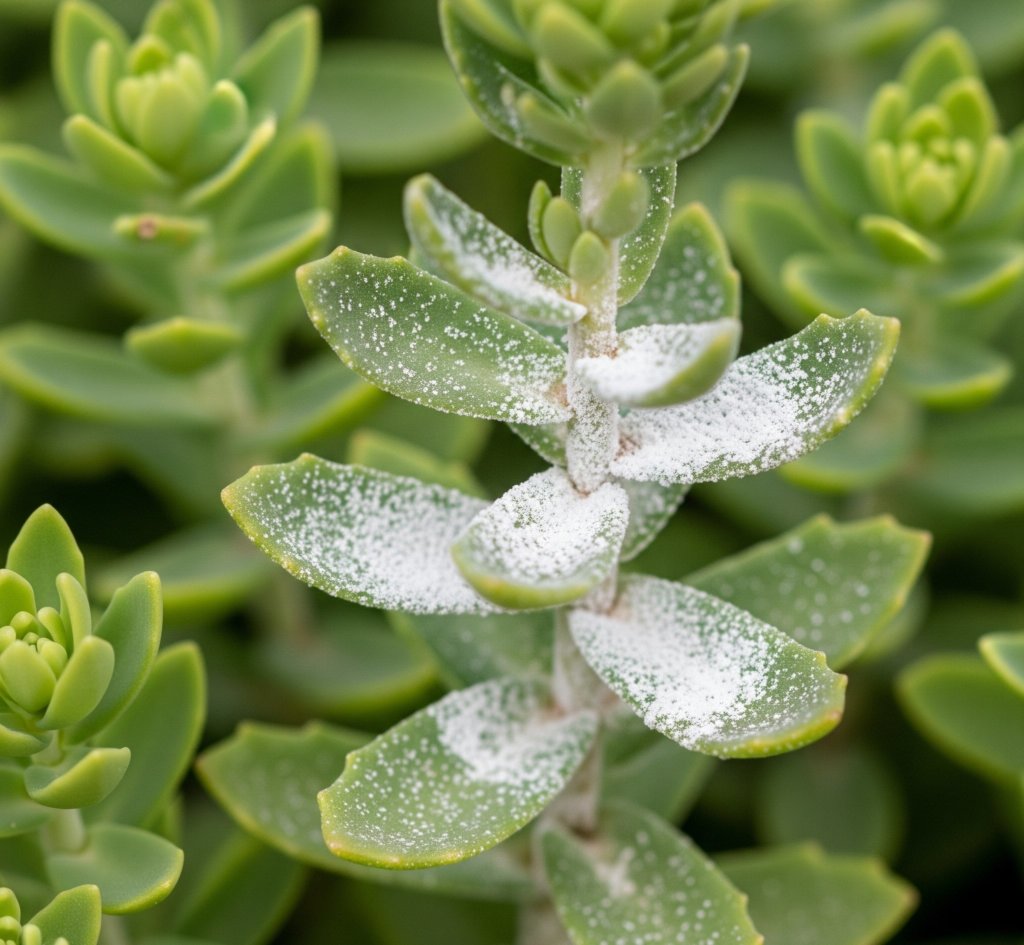
High humidity is a main reason powdery mildew grows. Succulents that are kept in rooms or outdoor spaces with poor airflow are at higher risk. When moisture sits on leaf surfaces and doesn’t evaporate, it creates a perfect home for mildew.
Temperatures between 69°F and 81°F encourage the fungi to spread. In crowded spaces or greenhouses, lack of fresh air makes it even easier for the fungus to develop.
Proper air circulation is crucial. If air cannot move freely around your plants, spots of humidity can linger, letting mildew spores find a place to grow. To help, space plants apart and use a small fan if needed.
Watering Practices and Overwatering
Too much water or frequent watering is a common mistake for succulent owners. Overwatering leaves soil moist for long periods, increasing humidity near the plant’s base. This moist environment supports fungal infections.
Nighttime watering is problematic. If you water succulents in the evening, the leaves stay wet overnight, giving powdery mildew more time to germinate. Morning watering lets leaves dry out during the day.
To avoid powdery mildew, water only when the soil is completely dry and avoid getting water on the leaves if possible. Stick to a regular watering schedule and monitor soil moisture closely.
Treatment Methods for Powdery Mildew
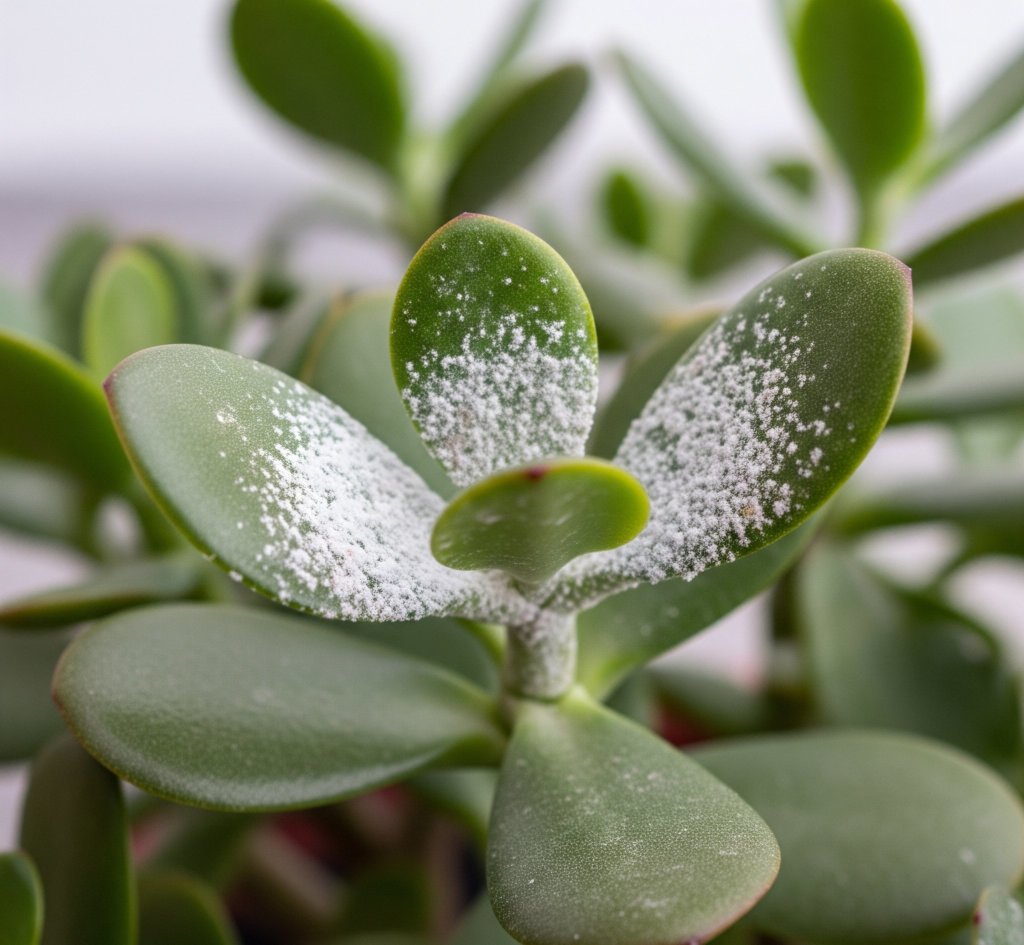
There are several effective ways to treat powdery mildew on succulents, ranging from simple sprays you can make at home to using store-bought fungicides. Choosing the right method depends on how serious the infection is and what materials you have available.
Natural Remedies and Sprays
Many gardeners start with natural methods to treat powdery mildew because they are safer for plants and people. One common option is a baking soda solution. Mix 1 teaspoon of baking soda, a few drops of mild liquid soap, and 1 quart of water. Spray the mix directly onto affected leaves every 7 days.
You can also use potassium bicarbonate. This works much like baking soda but may be a bit more effective at stopping spore growth.
Neem oil is another choice that’s safe for most succulents. Mix neem oil according to the product directions and spray onto leaves.
Other DIY sprays for mild infections include diluted milk (1 part milk to 2-3 parts water) and apple cider vinegar (1 tablespoon per quart of water).
Test any spray on a small part of your succulent first, as some plants are sensitive.
Fungicide Options
When natural sprays do not work or the infection is spreading fast, you may need to use commercial fungicides.
Copper fungicide is a popular option. It controls powdery mildew but should be used exactly as the label instructs, as too much can harm succulent leaves.
Another choice is a sulfur-based fungicide. Sulfur stops fungus spores from growing, but make sure your plant is not sensitive to sulfur before spraying a lot.
Potassium bicarbonate fungicides are sold in stores and can be more effective than plain baking soda.
Most fungicides come as sprays or powders. Always wear gloves and follow all safety guidelines.
Step-by-Step Treatment Process
- Isolate infected plants right away to stop mildew from spreading to others.
- Remove infected leaves using clean scissors or pruners. Dispose of them in the trash, not compost.
- Spray natural or chemical treatment evenly on all affected areas, covering the tops and bottoms of leaves.
- Repeat treatment every 7-10 days as long as you see signs of powdery mildew.
- Increase air movement by spacing out your succulents and reducing humidity.
- Water from the bottom, avoid watering from above, as wet leaves can promote fungal growth.
Wait for visible improvement. If your chosen treatment does not work after a few weeks, switch to a different method or a stronger fungicide.
When to Remove Severely Infected Plants
In some cases, powdery mildew is too widespread to save a plant. Signs include nearly all leaves covered in white spots, leaves turning yellow or mushy, and stems looking weak.
If most of your succulent is infected, it is usually best to remove and trash the whole plant. This stops the mildew from spreading to nearby healthy succulents.
Always use clean tools and wash your hands after handling sick plants. If any healthy leaves or stems remain, you can try taking cuttings to start a new plant. This way, you keep your succulent collection safe and healthy.

